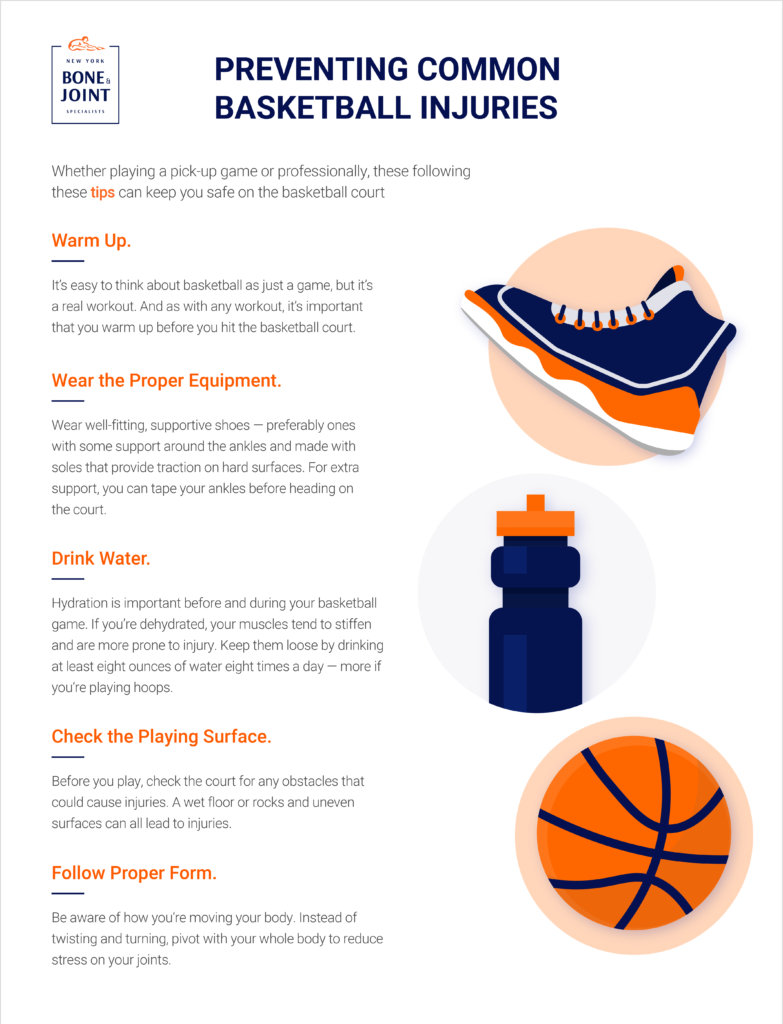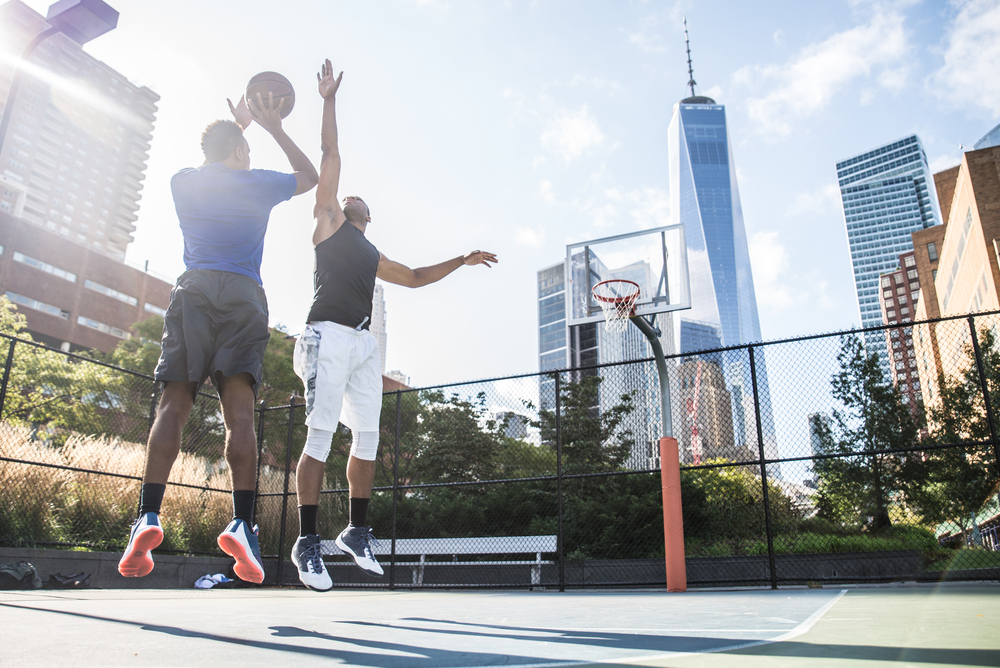Playing basketball is a hugely popular pastime — and for good reason! But if you aren’t careful, you can seriously injure yourself playing the game. Learn how to keep that from happening.
Basketball is one of the most beloved sports in the U.S., second only to football in its popularity. All the proof you need comes each spring when millions are glued to their televisions watching college basketball’s premier tournament known as March Madness.
But you don’t have to be a college star or professional to shoot hoops. For those who love team sports, basketball is the perfect outlet for their competitive nature, combining agility, speed, and fun whether you’re playing indoors or outdoors. Unfortunately, whether you’re at the amateur level or a professional one, basketball can cause serious orthopedic injuries if you don’t take precautions and prepare for the game. Learn about the most common injuries and get tips on prevention so you can stay on the court and stay healthy!
3 Common Basketball Injuries
Basketball injuries occur most often to the lower extremities, which isn’t surprising considering the amount of running, twisting, and jumping your legs engage in during a game. Here’s a brief rundown of three particularly common basketball injuries:
Jumper’s Knee. Jumper’s knee, or patellar tendonitis, refers to an inflammation or trauma to the patellar tendon, a rope of tissue connecting the kneecap to the shinbone. Jumper’s knee is a repetitive injury resulting from constant jumping on hard surfaces, which inflames the tendon. For a minor irritation, you may experience slight discomfort, but still be able to play after some rest. More serious tendon injuries or a complete tear can lead to chronic pain and may possibly require surgery to repair.
Ankle Sprains. One of the most common injuries in basketball is an ankle sprain. A sharp pivot, awkward landing on your foot, or sudden change in direction can easily overextend your ankle ligaments beyond their capacity to stretch, causing a painful sprain.
Jammed Fingers. Although less common than knee and ankle traumas, finger injuries can also occur while playing basketball. A basketball thrown forcefully at high speed can jam or possibly break a finger if you aren’t ready to catch the ball.
6 Ways to Prevent Basketball Injuries
Luckily, you can enjoy basketball and prevent knee and ankle injuries by taking precautions before you take to the court and as you play. Try these six tips for a safe game:

Maintain Overall Fitness. Basketball provides a vigorous workout, but to play at a high level you need to maintain your overall fitness. That means following a balanced program of strength training, flexibility, and cardio exercise. The stronger the muscles surrounding your knees are the better able they will be to withstand the rigors of playing basketball. Being fit also increases your stamina, which helps you play an entire game without getting tired. When you’re fatigued, you’re more likely to suffer an injury.
Warm Up. It’s easy to think about basketball as just a game, but it’s a real workout. And as with any workout, it’s important that you warm up before you hit the basketball court. Take five minutes to loosen your muscles with simple exercises such as jumping jacks, pedaling a stationary bike, or walking in place. Then take another five minutes to stretch your leg muscles.
Wear the Proper Equipment. Wear well-fitting, supportive shoes — preferably ones with some support around the ankles and made with soles that provide traction on hard surfaces. For extra support, you can tape your ankles before heading on the court. Knee and elbow pads are also a great choice that offer protection for those vulnerable joints.
Drink Water. Hydration is important before and during your basketball game. If you’re dehydrated, your muscles tend to stiffen and are more prone to injury. Keep them loose by drinking at least eight ounces of water eight times a day — more if you’re playing hoops.
Check the Playing Surface. Before you play, check the court for any obstacles that could cause injuries. A wet floor, for example, may cause slips and falls. Any rocks or uneven surfaces (which often appear on outdoor courts) could also cause players to tumble and injure themselves.
Follow Proper Form. Be aware of how you’re moving your body. Instead of twisting and turning, pivot with your whole body to reduce stress on your joints. In a high speed game, you may sometimes make aggressive moves that could hurt you or your fellow players. Play the game safely and with others in mind so you all can enjoy a competitive and safe match.
Get Back on the Court
If you think you injured your knee or ankle — whether from playing some basketball or from any other activity — the first step to recovery is rest and icing if you notice pain and swelling. Pain that persists or interferes with your ability to move should be evaluated by an orthopedist for further treatment or physical therapy.
The orthopedists and physical therapists at New York Bone & Joint Specialists focus on treating knee and ankle injuries, like ones that occur during a basketball game. We can help you heal so you can go back to playing the game you love. Contact us for a consultation.




